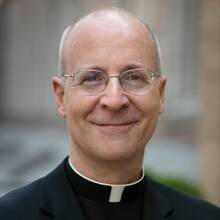 David Van Biema's pieces in Time are always worth reading. This one, which looks at a trend that has flown largely under the religious radar, is no exception. The racial divide is falling fastest, says Van Biema, in evanglical Christianity.
David Van Biema's pieces in Time are always worth reading. This one, which looks at a trend that has flown largely under the religious radar, is no exception. The racial divide is falling fastest, says Van Biema, in evanglical Christianity.
In 1963, Martin Luther King Jr. famously declared that "11 o'clock Sunday morning is the most segregated hour of the week ... And the Sunday school is still the most segregated school." That largely remains true today. Despite the growing desegregation of most key American institutions, churches are still a glaring exception. Surveys from 2007 show that fewer than 8% of American congregations have a significant racial mix.
Since Reconstruction, when African Americans fled or were ejected from white churches, black and white Christianity have developed striking differences of style and substance. The argument can be made that people attend the church they are used to; many minorities have scant desire to attend a white church, seeing their faith as an important vessel of cultural identity. But those many who desire a transracial faith life have found themselves discouraged — subtly, often unintentionally, but remarkably consistently. In an age of mixed-race malls, mixed-race pop-music charts and, yes, a mixed-race President, the church divide seems increasingly peculiar. It is troubling, even scandalous, that our most intimate public gatherings — and those most safely beyond the law's reach — remain color-coded.
But in some churches, the racial divide is beginning to erode, and it is fading fastest in one of American religion's most conservative precincts: Evangelical Christianity. According to Michael Emerson, a specialist on race and faith at Rice University, the proportion of American churches with 20% or more minority participation has languished at about 7.5% for the past nine years. But among Evangelical churches with attendance of 1,000 people or more, the slice has more than quadrupled, from 6% in 1998 to 25% in 2007.
Read the rest here, with an eye to what we Catholics might learn from this development.
James Martin, SJ








Catholic churches remain largely defined by the territorial parish (even with the greater freedom to parish-shop that came with the 1983 Code of Canon Law), which tends to reinforce residential patterns that are heavily sorted by class and ethnicity, though territorial parishes may be more diverse that intentional communities in terms of class.